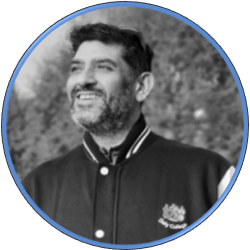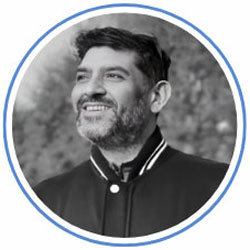#Warrior’s Path Research Bits – No. 1/2
Tanja Matheis, our researcher on the Warrior‘s Path team, documents the implementation of Syngrity’s exciting new experiential intervention. Rumor has it that she is intertwined with her laptop, but she actually loves spending time walking and trekking, in good company, with cheese snacks and a camera. In this series, she talks about her research on the Warrior’s Path concept development and outdoor experiences. Stay tuned for more insights!
One of the many facets of a warrior is the way she or he responds to a sudden change in the environment. As the group of participants set out for the first round of the Warrior’s Path, they were confronted with a fundamental turn in the program. Were they ready for change?
The first Warrior’s Path to Annapurna Base Camp was successfully completed this September, a promising prelude to the upcoming new programs offered by Syngrity Transformation Solutions in 2019. But wait…wasn’t it EBC, the Everest Base Camp? How on earth did the E become an A, i.e. Annapurna?
Since spring 2018, the team, consisting of Syngrity, Natural Adventure Foundation (NAF) and Go Magic Trails (GMT), eagerly promoted the Warrior’s Path to the Everest Base Camp in Nepal. Choosing the Everest Base Camp as a destination is obvious, given the spirit of the program.
The Warrior’s Path is a metaphor for awareness of the mind, body, heart, and spirit. The program is a culmination of the study of the human body via martial practices and alternative thought processes. Trekking to the base camp of the world’s highest peak requires preparation at the physical, mental and emotional level, and endurance and awareness along the way. The destination has the power to inspire people deeply, as it allows a glimpse at the journeys of pioneering mountaineers, including Edmund Hillary, Junko Tabei, or Reinhold Messner. Hence, the motivation to walk this particular path forms an excellent basis on which personal thoughts, emotions and conditioning can be explored and questioned.
In fact, the destination “EBC” became an allegory of commitment for the team members as well as for the participants, who signed up with a thrill of anticipation. Over the course of several months, the participants trained, delved into tales of Everest ascents, and pondered their potential responses to cold temperatures, high altitude and group dynamics.
But then everything changed. When the warriors cheerfully reached the Kathmandu Domestic Airport in the morning of September 13 to take a flight to Lukla, they learnt that for the past 4 days, there had been no flights due to fog and strong winds. Lukla does have a dangerous airport, with an extremely short runway nestled in the mountains. That same morning, the weather did not look too good either. Still optimistic, the participants made themselves comfortable in the airport waiting area, sipping chai and cracking jokes about each other’s “heavy-duty” luggage. Everyone hoped that the weather would clear up eventually, and that they could get on a different flight in the late morning.
The guides kept checking with the airline. “Still no confirmed flight,” was the recurring message that would dash the group’s expectations. As the weather did not improve, the group started considering a previously unthinkable and more expensive solution: hiring a chopper to reach a landing spot below Lukla, which is not accessible by road. That would add 2 additional hours of trekking to the initial plan, but the participants agreed that this would be valid option. Hence, many calls were made and old contacts were reactivated to engage the service of a chopper.
Since even the choppers were stuck and couldn’t take off, neither from Kathmandu nor from near Lukla, it dawned on the team and participants that EBC might not happen at all. Some participants were discontented and yet stayed upbeat on the surface, whereas others remained silent. The whole group was disappointed.
What happens when the main driver of a project suddenly disintegrates? How do people respond to this sudden change? Well, there are different possible responses.
One is resistance. Sometimes, the desire to achieve a certain goal can become all-consuming, and any alternative seems unworthy to pursue. Behind the reluctance to accept change often stands a strong preference for stability and a fear of change and its consequences. Resistance may be a dead end, with little or no space for solutions.
Another response could be passive acceptance. Not resisting a change can be a convenient way to fit in with a team without having to take responsibility for decision-making. Passive acceptance can also be a reflection of being in the moment, and simply absorbing what emerges.
You can also actively embrace change, and become a shaper of the new workings. This includes the ability to accept change in the first place, as well as the mindset to develop something from the new point of departure. Therefore, embracing change can be a great learning space. An indication of this is when quick decisions are taken.
And this is exactly what happened. Deepak, the head of the tour operating agency, sat everyone down and calmly presented the facts. “You could go back to the hotel, spend another night there and then come back in the morning to see whether flights take off tomorrow,” he explained. Given the prolonged bad weather forecast, another proposition suddenly seemed more tempting. Due to the participants’ flights back to Delhi in 13 days, the group could not afford to waste time, but the hopes to trek to EBC were still profound.
“How about we change the “E” in “EBC” to an “A”, and go to the Annapurna Base Camp instead?”
Choosing this option would mean that the group can leave the same day and start from a trailhead that is accessible by car, in the worst case scenario. The trek to Annapurna Base Camp offers tropical and alpine terrain, and can be completed within 10 days. The base camp offers an almost 360 degree mountain panorama view. It just isn’t Everest Base Camp.
Participants’ responses were instant and surprising given their strong commitment to EBC. “But I told everyone at home I have bragging rights for at least 6 months after I have completed the EBC trek” soon turned into “well, sure, let’s start with the alphabet’s first letter”. One person said, “actually I haven’t been to the Annapurna Base Camp yet either, so let’s do it!” Within half an hour of discussing in a circle outside the airport building, everyone was on the same page, realizing that changing plans quickly would give the group the best room to maneuver.
Hence, Annapurna Base Camp it was! The mountains, and their unpredictable weather, taught everyone a lesson of humility, right at the beginning. There are things you cannot change, but you can adjust certain parameters if you consider your options thoroughly, timely and intuitively. EBC or ABC, the journey is the destination.
Tanja is a research consultant and holds a master’s degree in development economics, focusing on quantitative and qualitative research techniques. She has documented the work of development professionals and small-scale entrepreneurs in West Africa and India. Her field visit insights became part of a publication series by the German Development Cooperation Agency GIZ based in New-Delhi, which she conceptualized and edited.







 MALATI VASUDEVA
MALATI VASUDEVA VIKRAM BADHWAR
VIKRAM BADHWAR PRIYANKA KUMAR
PRIYANKA KUMAR SUMAL VARGHESE
SUMAL VARGHESE














